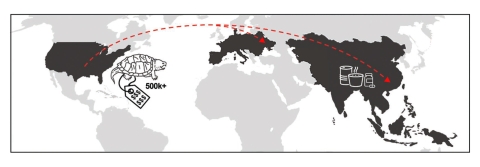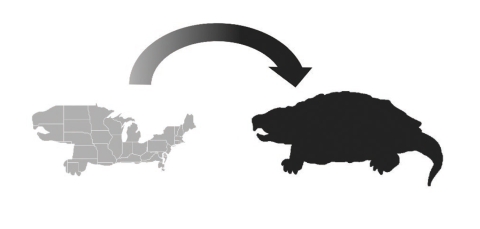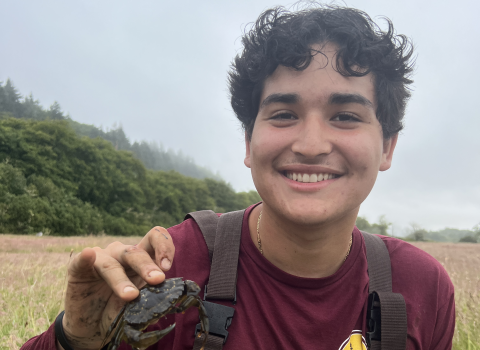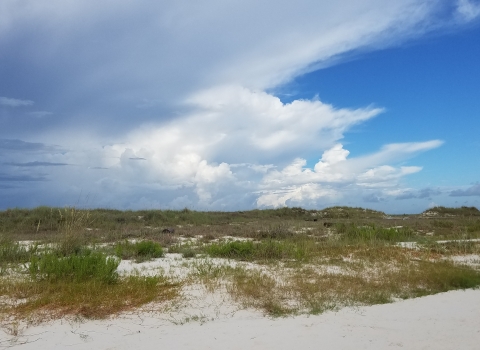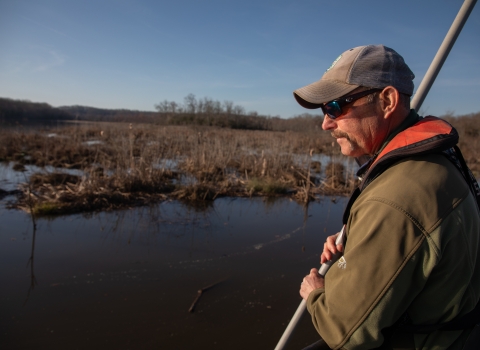You’ve probably heard the fable about the tortoise and the hare. But what about the snapping turtle and the white-tailed deer? It's not a story about reaching the finishing line first. Rather, about reaching the starting line. And it’s not a fable, it’s biology. White-tailed deer can start to reproduce at age one. A snapping turtle born the same year won’t reach reproductive age until it’s 17.
By the time the snapping turtle has its first clutch of eggs, the descendants of the original white-tailed deer could amount to as many as 629 more mature white-tailed deer.
Meanwhile, few, if any, of the snapping turtle’s young will survive simply because they are so small. The eggs and hatchlings are bite-sized snacks for predators like foxes and skunks.
So who wins the race?
Uneven playing field
Usually, nature levels the reproductive playing field for wildlife that mature at different rates. White-tailed deer are significantly more productive than turtles, but they need to be in order to replace themselves in the population because they only live for four or five years.
In contrast, turtles and tortoises can live for a long time – many decades. Once they reach reproductive age, they can reproduce for the rest of their lives and, odds are, one or two of the hatchlings they produce over their lifetimes will survive to reproductive age as well.
The problem is that turtles’ lives are often interrupted before they have the chance to replace themselves in their populations. On top of threats from habitat loss, cars when crossing roads, and climate change climate change
Climate change includes both global warming driven by human-induced emissions of greenhouse gases and the resulting large-scale shifts in weather patterns. Though there have been previous periods of climatic change, since the mid-20th century humans have had an unprecedented impact on Earth's climate system and caused change on a global scale.
Learn more about climate change , turtles are threatened by overcollection. When people remove reproductive adult turtles from the wild at unsustainable rates, they remove future generations as well.
Between 2013 and 2019, nearly 1.5 million live musk turtles (genus Sternotherus) were exported from the United States, with the majority of specimens sourced from the wild. In a similar timeframe, more than 200,000 alligator snapping turtles and more than 700,000 common snapping turtles were exported from the U.S. Most of these turtles were destined for Southeast Asia and Europe. Can our turtle populations keep pace with this demand?
Turtles don’t need more challenges. They are already considered one the most imperiled vertebrate groups in the world. The authors of a recent study published in Nature stated that most species of turtles “require urgent, targeted action to prevent extinctions.”
A treaty that can help turtles
One far-reaching action we can take is to use the Convention on International Trade in Endangered Species of Wild Fauna and Flora (CITES)— an international treaty created to support the sustainable wildlife trade — to increase regulatory oversight of the trade in turtles, whether for pets, food, or medicinal purposes.
That’s why in 2022 the U.S. proposed to include several North American turtle species in CITES Appendix II, a list of species that, although not necessarily threatened with extinction, may become so without trade regulation.
While different states in the U.S. have conservation- and trade-management strategies in place for the proposed species — alligator snapping turtle, common snapping turtle, three species of softshell turtles, five species of broad-headed map turtles, and four species of musk turtles — the inconsistent approach makes it easy for people to exploit the trade, putting turtles at risk of extinction.
A CITES Appendix II listing complements existing management efforts by states, reducing the risk of overharvesting, and supporting sustainable trade in our native turtles.
What’s at stake
Turtles are among of the natural treasures that make the U.S. special. We are home to a greater number of terrestrial and freshwater turtle species than any other single country. Some species live only here, and many are already imperiled.
By taking action to ensure a sustainable future for our turtles, we prevent the loss of individual species, and the biodiversity they contribute to natural communities.
All turtle proposals submitted by the U.S. were adopted by the Parties, and the new inclusions to CITES Appendix II went into effect on February 23, 2023.
Learn more about CITES at: https://www.fws.gov/cites



